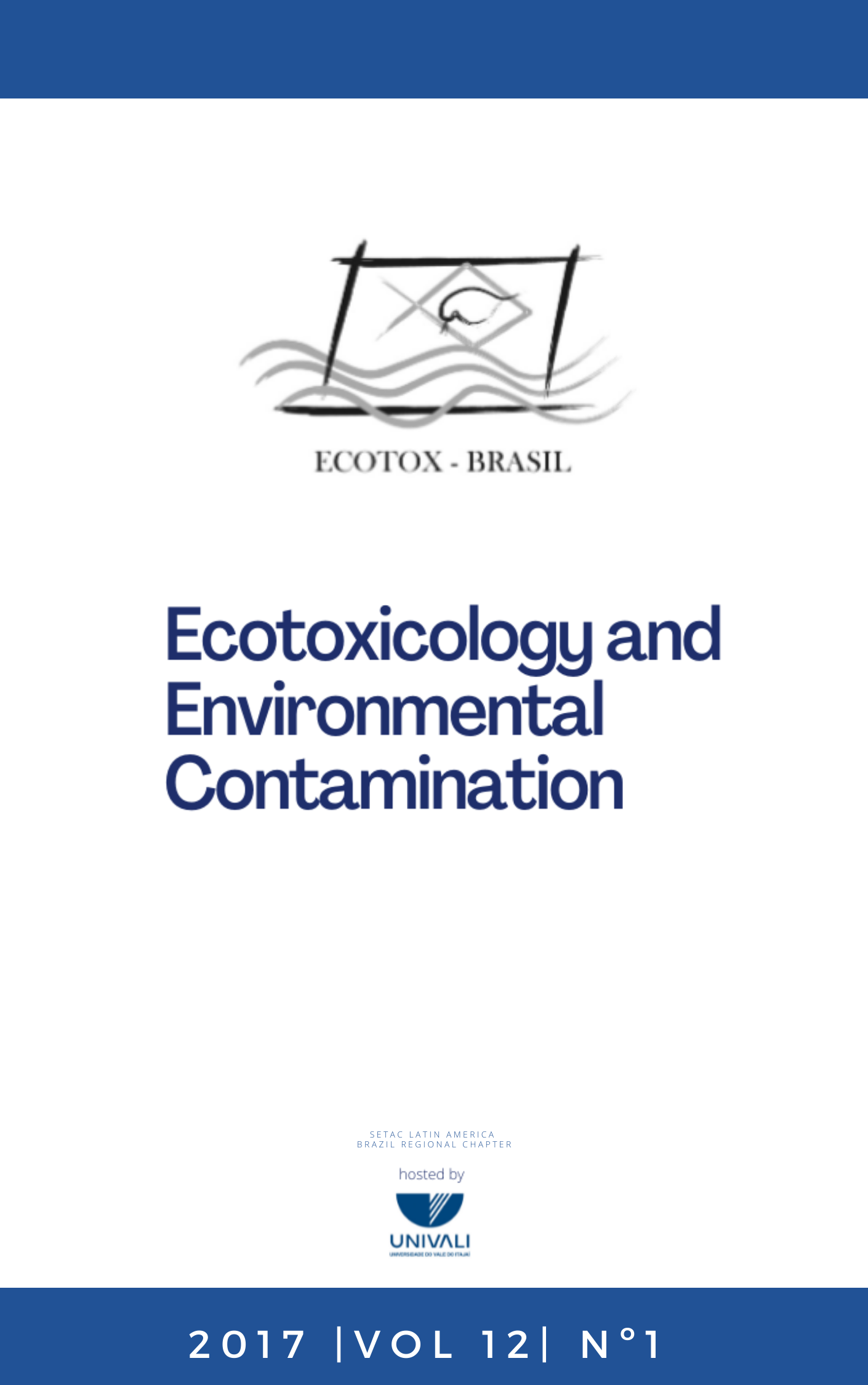Toxicity evaluation of PAHs in the sponge Hymeniacidon heliophila: field assessment and laboratory assays - a preliminary study
DOI:
https://doi.org/10.5132/eec.2017.01.14Resumo
Polycyclic aromatic hydrocarbons (PAHs) have been extensively studied in the aquatic environment, although the mechanism of action and biological effects of this xenobiotic in several species, including sponges, are not yet well known. In this context, the aims of the present study were to apply the sponge Hymeniacidon heliophila as a biomonitor for PAH contamination, and to determine PAH depuration and chrysene accumulation patterns through bioassays, evaluating biomarkers in order to verify sublethal responses to exposure. The monitoring of two Southeastern Brazilian areas, Quadrado da Urca and Itaipu beach, indicated bioconcentration of PAHs in sponges. A predominantly petrogenic character was observed in the evaluated areas. Uptake of chrysene and elimination of PAHs were evaluated in H. heliophila, through the biomarkers neutral red and reduced glutathione (GSH), as well as histological evaluations. In the depuration assay, sponges from Quadrado da Urca, a contaminated site, were transferred to aquaria and collected at 24, 48, 72, 96, 168, 240 and 336 h. No significant depuration occurred during the first 96 h, and no changes were verified in the evaluated biomarkers. However, the sponges were able to depurate PAHs from 96 h to 336 h, indicating that this species may reach a healthy status if the environment is uncontaminated. An accumulation bioassay was carried up to 96 h, with sponges from Itaipu beach, in order to evaluate their ability to accumulate chrysene and show immediate effects. Accumulation was intense during 72 h, followed by a decline at 96 h. Neutral red retention time declined with chrysene accumulation, and the decrease of accumulation at 96 h seems related to GSH production. Histological structures were proven to be useful biomarkers of sponge health for experimental conditions. Thus, H. heliophila is confirmed to be an adequate bioindicator PAHs exposure.
Downloads
Downloads
Publicado
Como Citar
Edição
Seção
Licença
Copyright © 2006 ECOTOX-BRAZIL
Copyright notice: It is a condition for publication that manuscripts submitted to this journal have not yet been published and will not be simultaneously submitted or published of elsewhere. By submitting a manuscript, the authors agree that copyright for their article is transferred to the Sociedade Brasileira de Ecotoxicologia (ECOTOX-Brazil) if and when the article is accepted for publication. The copyright covers the exclusive rights to reproduce and distribute articles, including reprints, photographic reproductions or any other reproduction of a similar nature, including translations. No part of this publication may be reproduced, stored in a retrieval system or transmitted in any form or by any means, electronic, mechanical, photocopying, recording or otherwise, without permission of the publisher.
Notice: While every effort is made by the JBSE, editors and editorial board to see that no inaccurate or misleading data, opinions or statements appear in this journal, they wish to make it clear that the contents of the articles and advertisements published herein are the sole responsibility of the contributors or advertisers concerned. Accordingly, the JBSE, the editorial board and editors and their respective employees, officers and agents accept no responsibility or liability whatsoever for the consequences of any inaccurate or misleading data, opinion or statement.




